As Southeast Asia, European and American countries began to use acrylic as side(s) and bottom of swimming pools. The acrylic swimming pool market has gradually come under the spotlight, and acrylic has started to be widely used in resort hotels, private villas and high-end clubs for infinity pools and transparent pool construction.
The types of acrylic pools are mainly divided into Acrylic Pools with one side acrylic wall (picture below), it is a simple and economical design; Acrylic Pools with L-shaped acrylic wall, it is generally adjacent sides spliced (picture below), the unique corner design is often used in commercial buildings; overhanging pool with acrylic bottom (picture below), you can enjoy the ground and farther scenery in the suspended swimming pool when you swim.
The thickness of acrylic glass used for swimming pools can vary depending on factors such as the size of the pool, water pressure, and design specifications. Generally, acrylic panels for pool construction can range from around 2 inches (50 mm) to 12 inches (300 mm) in thickness. Thicker panels are often used for larger pools or those with greater water depth to ensure structural integrity and safety. It's recommended to consult with a professional pool designer or engineer to determine the appropriate thickness for a specific pool project.
How thick is acrylic glass for swimming pool?
Thickness tolerance of ACRYLITE® cast sheet.
The thickness tolerances for acrylic sheets can vary depending on the manufacturing process and the specific grade of acrylic. Generally, standard tolerances for acrylic sheet thickness range from ±5% to ±10%. This means that the actual thickness of the sheet may deviate by a certain percentage from the nominal or specified thickness.
For example, if you have a 1/4-inch (6.35 mm) thick acrylic sheet with a tolerance of ±5%, the actual thickness could be between 0.2375 inches (6.0325 mm) and 0.2625 inches (6.7275 mm).
It's important to check with the manufacturer or supplier for the exact tolerances of the acrylic sheets you are using, as these specifications can vary. Additionally, precision-cutting methods and the quality of the manufacturing process can also influence the final thickness tolerances.
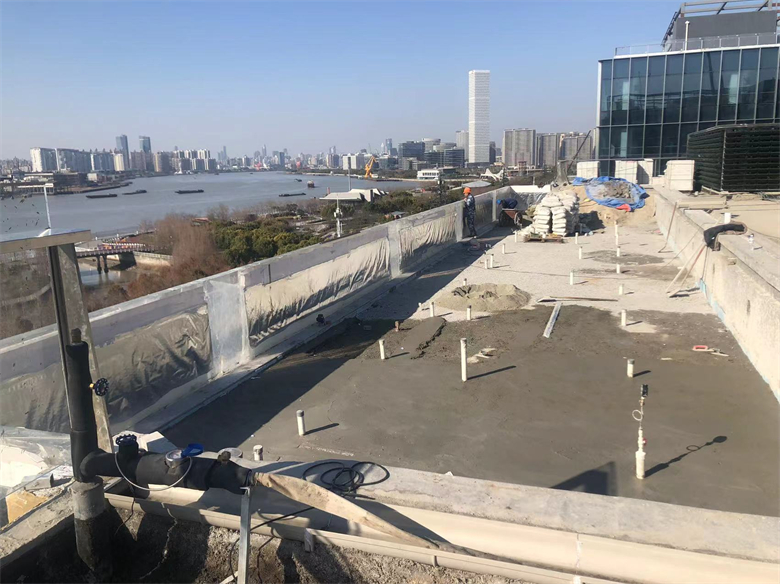
How thick should glass be for a pool?
How Thick Should a Glass Pool Fence Be?
How thick should acrylic be for a pool wall?
The thickness of acrylic glass for swimming pool walls can vary depending on the size and depth of the pool, as well as the design and structural requirements. In general, the thickness of acrylic glass used for swimming pools ranges from 20mm (0.79 inches) to 100mm (3.94 inches) or more.
For smaller pools or aquariums, a thickness of 20mm to 40mm may be sufficient, while larger pools or those with greater water pressure may require thicker acrylic glass. The thickness of the acrylic glass should be determined by a structural engineer or an expert in the field to ensure that it can withstand the water pressure and other forces that it will be subjected to.
Leyu Organic Glass Products Factory specializes in producing acrylic panels. The factory was established in 1996 and has been in the field of thick panels for 27 years. The thickness of acrylic sheets ranges from 20mm(0.656 inches) to 800mm(2.62inches).
If used as the wall or bottom plate of a swimming pool, the thickness of acrylic panels is related to the water level of the pool, and the design scheme also needs to be considered. The water pressure borne by acrylic panels varies at different depths, and the thickness of acrylic panels also varies. Thickness calculation requires finding a professional manufacturer to calculate. Leyu Factory uses professional software to calculate and has rich practical experience to help you choose the correct thickness. Regarding thickness calculation, this is a rigorous matter as it determines the safety of the project.
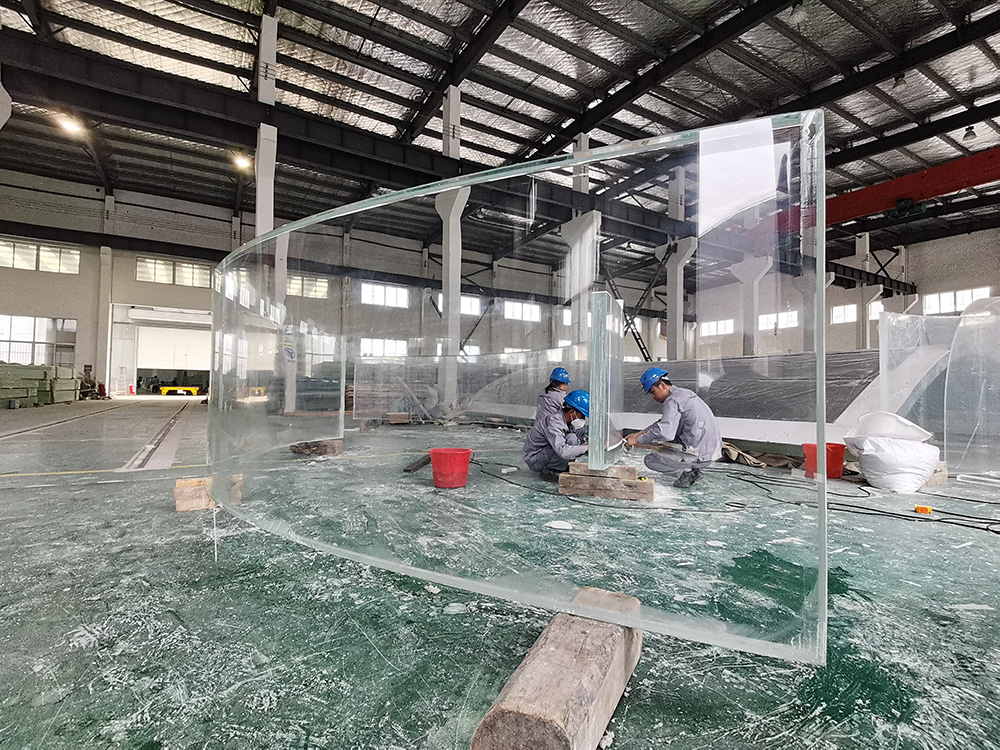
Acrylic arc sheet
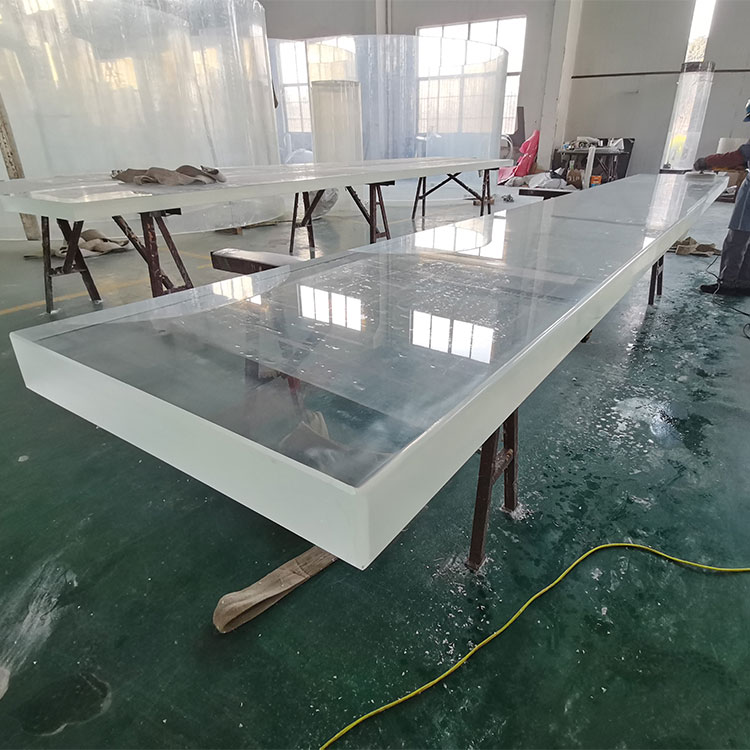
Le Yu acrylic sheet
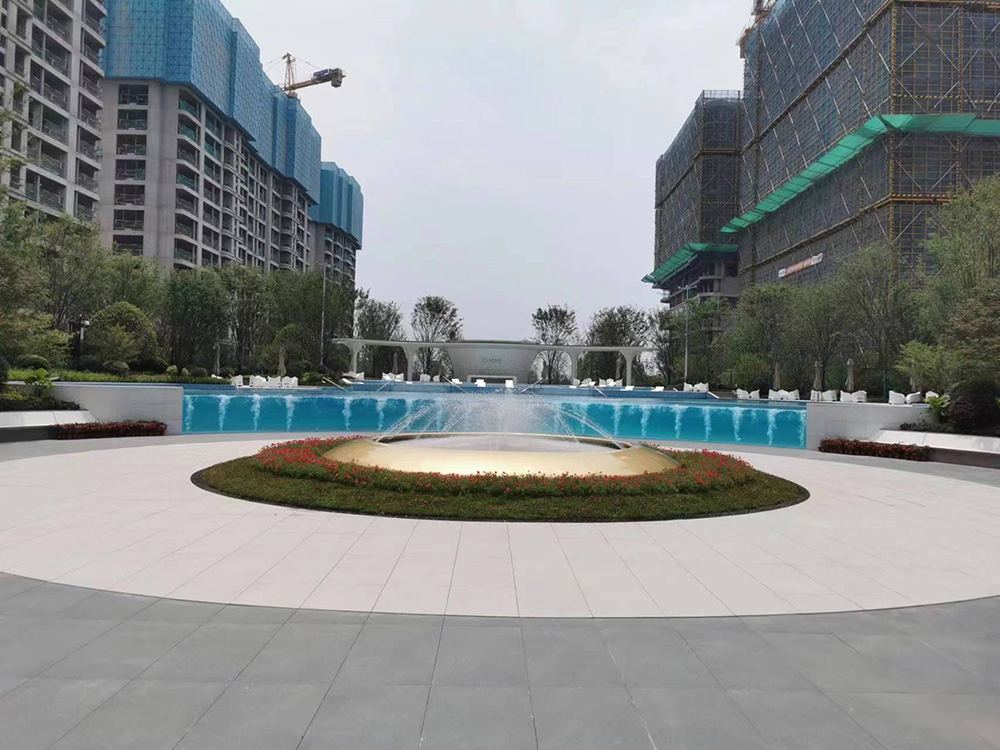
Le Yu arc swimming pool
How to choose the thickness of the acrylic board?
Acrylic sheet thickness | Free Sample
What Thickness of Plastic Is Suitable for Your Project?
If the depth of your swimming pool water level is 0.5m-0.8m(1ft 7.68in to 2ft 7.5in), the height of acrylic sheet is 650mm to 800mm(2ft1.6in-2ft7.5in), then the thickness of acrylic sheet can be 70mm (2.75inches), and the installation depth of acrylic sheet is 150mm (5.9inches). After installation, the visible size of acrylic sheet is 500mm-650mm(1ft9.65in-2ft1.6in).
The above is my example, suitable for three sided support. Of course, the thickness calculation also needs to consider the design scheme. If the installation is four sided support, the thickness of the acrylic sheet will be less than 70mm.
Therefore, for acrylic swimming pools, the thickness design of acrylic wall panels and acrylic bottom plates will be comprehensively considered based on the overall design scheme. Please contact a professional factory: Zhangjiagang city Leyu plexiglass® products factory
+ 8613584439533 (WhatsApp).

How thick is acrylic glass?
What is the thickness of acrylic sheets?
For more information on the thickness of acrylic and thin plates, please refer to the following materials.
Choosing the right thickness for cut-to-size acrylic sheets is crucial for ensuring the success of your project. The thickness of acrylic sheets impacts their durability, functionality, and aesthetics. In this article, we will guide you through the factors to consider and provide insights to help you make an informed decision.
Understanding Acrylic Sheet Thickness
Acrylic sheet thickness is typically measured in inches or millimeters. Common thickness options for cut-to-size acrylic sheets range from 1/16″ to 1/4″ or even thicker, depending on specific requirements.
What Thickness Does Plexiglass Sheet Come In?
Plexiglass sheets come in a variety of thicknesses to suit different applications and requirements. The available thickness options for plexiglass sheets range from very thin to quite thick, allowing for versatility in their use.
Acrylic sheet cut to size
Thin plexiglass sheets, typically measuring around 0.040″ (1.0mm) to 0.060″ (1.5mm) in thickness, are often used for lightweight applications such as picture frames, protective covers for artwork or photographs, and crafts.
For more general-purpose applications, plexiglass sheets with thicknesses of 0.080″ (2.0mm) to 0.125″ (3.2mm) are commonly available. These mid-range thicknesses offer a good balance between strength, durability, and cost-effectiveness. They can be used for items such as signage, display cases, shelves, and protective barriers.
Thicker plexiglass sheets, ranging from 0.1875″ (4.8mm) to 0.250″ (6.4mm) or even thicker, are suitable for projects that require greater strength and impact resistance. These thicker sheets are commonly used for applications like windows, partitions, aquariums, and outdoor protective barriers.
It’s important to note that plexiglass sheets can be manufactured in even thicker options, depending on specific needs. Thicker sheets, such as those measuring 0.500″ (12.7mm) or more, are typically used for specialized applications that require enhanced durability, structural support, or added insulation properties.
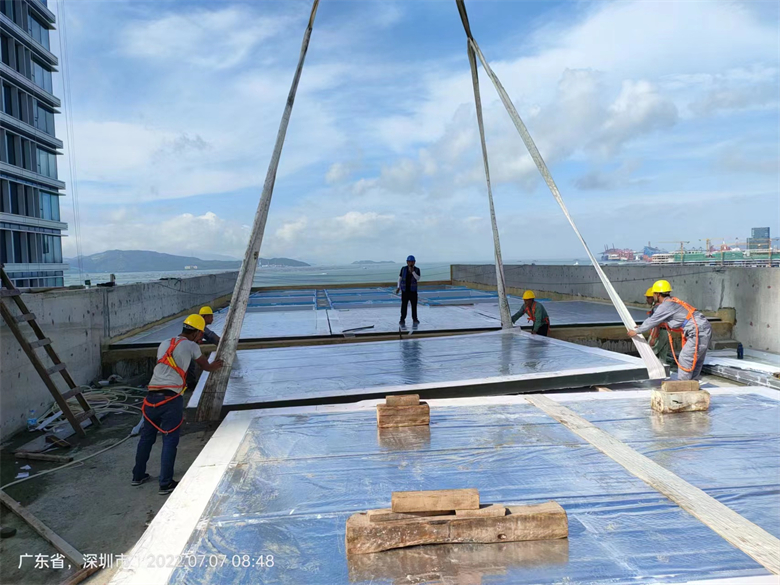
Acrylic Sheet Thickness Depends On Some Factors
A. Purpose and Application
The purpose and application of your project play a significant role in determining the appropriate thickness of acrylic sheets. For example, if you’re framing artwork or photographs, thinner sheets like 1/16″ or 1/8″ may be suitable. However, for protective barriers or high-impact applications, thicker sheets such as 1/4″ or greater would be more suitable.
B. Durability and Strength
Thicker acrylic sheets tend to be more durable and offer better resistance to impacts and bending. If your project involves areas with high traffic or outdoor installations, opting for thicker sheets will provide increased strength and longevity.
C. Weight and Handling
Thicker sheets are generally heavier, so it’s important to consider the weight and ease of handling for your specific project. If you require lightweight sheets for easier maneuverability, thinner options might be preferable.
D. Aesthetics and Visual Clarity
The thickness of acrylic sheets can affect their transparency and visual clarity. Thinner sheets typically offer better optical clarity, making them ideal for applications where visual appeal is a priority. Thicker sheets, on the other hand, may create a bolder and more substantial appearance.
E. Cost Considerations
Thicker acrylic sheets tend to be more expensive due to the additional material required. It’s important to balance your desired features with the available budget. Consider whether the added thickness is necessary for your specific project or if a thinner sheet can fulfill the requirements.
Conclusion
Choosing the right thickness for cut-to-size acrylic sheets is essential to ensure the success and longevity of your project. By considering factors such as purpose, durability, weight, aesthetics, and cost, you can make an informed decision. Remember to assess the specific requirements of your project and consult with professionals if necessary to achieve the desired results.
FAQs about Cut-to-Size Acrylic Sheets
Q1: How To Cut Acrylic Sheets?
laser cut acrylic sheet
To cut acrylic sheets, follow these steps for a clean and precise cut.
First, measure and mark the desired cutting line on the sheet using a measuring tape and a fine-tip marker.
Next, secure the acrylic sheet on a stable work surface, making sure it does not flex or bend during the cutting process.
Use a sharp utility knife or acrylic cutter to score the sheet along the marked line, applying firm and consistent pressure.
Once the sheet is scored, place it on the edge of the work surface with the scored line hanging slightly over the edge.
Apply downward pressure to snap the sheet along the scored line, creating a clean cut.
To remove any rough edges, use sandpaper or a deburring tool to smooth and refine the cut edge.
Remember to wear appropriate safety gear, such as gloves and safety goggles, when working with acrylic sheets.
Q2: Can I Cut Acrylic Sheets To My Desired Size?
A1: Yes, acrylic sheets can be easily cut to your desired size. They can be cut using tools such as a circular saw, jigsaw, or laser cutter. It’s important to follow proper safety precautions and use the appropriate tools for cutting acrylic.
Q3: Are PMMA Sheets Prone To Scratching?
A2: Acrylic sheets are more prone to scratching compared to glass. However, there are acrylic sheets available with scratch-resistant coatings that provide added protection. Additionally, proper care and cleaning techniques can help minimize scratching.
Q4: Can Plexiglass Sheets Be Used Outdoors?
A3: Yes, acrylic sheets can be used outdoors. However, it’s important to choose the right thickness and consider UV-resistant options for prolonged exposure to sunlight. Thicker sheets are generally more suitable for outdoor applications due to their increased durability.
Q5: How Do I Clean Acrylic Sheets?
A4: To clean acrylic sheets, use a soft, lint-free cloth or sponge and a mild soap solution. Avoid using abrasive cleaners or rough materials that could scratch the surface. Gently wipe the sheet in a circular motion, and then rinse with clean water. Dry with a soft cloth to prevent water spots.
Q6: Can Acrylic Sheets Be Bent Or Shaped?
A5: Yes, acrylic sheets can be bent or shaped using heat-forming techniques. By applying heat evenly to the acrylic sheet, it becomes pliable, allowing you to create desired bends or shapes. It’s important to follow proper instructions and guidelines for heat-forming acrylic.
Remember, if you have specific questions or concerns about cut-to-size acrylic sheets, it’s best to consult with us. We can provide tailored advice based on your unique project requirements.
English
العربية
Русский
Español
Português
Français
Deutsch
italiano
한국어
Nederlands
Tiếng Việt
ไทย
Polski
Türkçe
አማርኛ
ភាសាខ្មែរ
Bahasa Melayu
தமிழ்
Filipino
Bahasa Indonesia
magyar
Română
Čeština
Српски
हिन्दी
فارسی
Kiswahili
Slovenčina
Slovenščina
Norsk
Svenska
Ελληνικά
Suomi
עברית
Dansk
Shqip
বাংলা
Hrvatski
Afrikaans
Māori
සිංහල
Беларуская мова
Bosanski
ދިވެހި
Esperanto
guarani
Hausa
ʻŌlelo Hawaiʻi
Kurdî
Lietuvių
Македонски
ਪੰਜਾਬੀ
Runasimi
Türkmençe
isiZulu


 +86-13584439533
+86-13584439533 


































